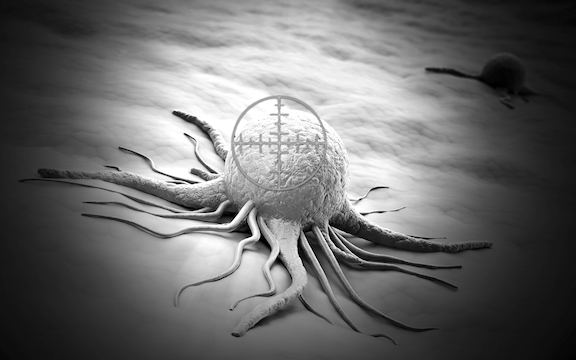
Traditional cancer therapies designed to stimulate the immune system or mimic its normal functions are often ineffective in defending against certain cancers.
To solve this problem, Honggang Cui, an associate professor of chemical and biomolecular engineering and member of the Institute for NanoBioTechnology, is leading a team in developing a dual chemo-immunotherapy treatment that is designed to create an immune-responsive environment through targeted, sustained release of a cancer immunotherapy drug.
Cui’s approach is to create a selfassembling hydrogel version of the chemotherapy drug camptothecin, which can be administered directly into a tumor and released over a two-month period. The hydrogel form enables Cui to incorporate cyclic dinucleotide c-di-AMP, a molecule that activates cell signaling pathways to stimulate an immune response. The CPT and CDA work synergistically to destroy the tumor, which causes inflammation, a natural immune response that attracts more immune cells to the tumor site to penetrate and further destroy it.
This novel therapy already has been tested on mice with a variety of tumor types, and the results showed near tumor regression in most models, with no obvious side effects.




